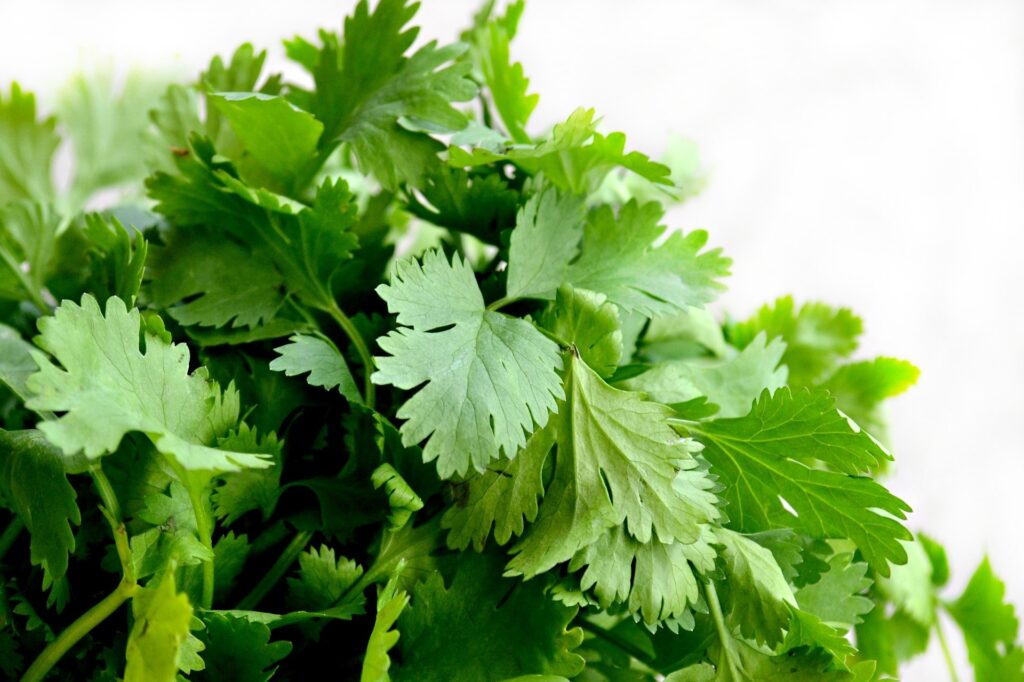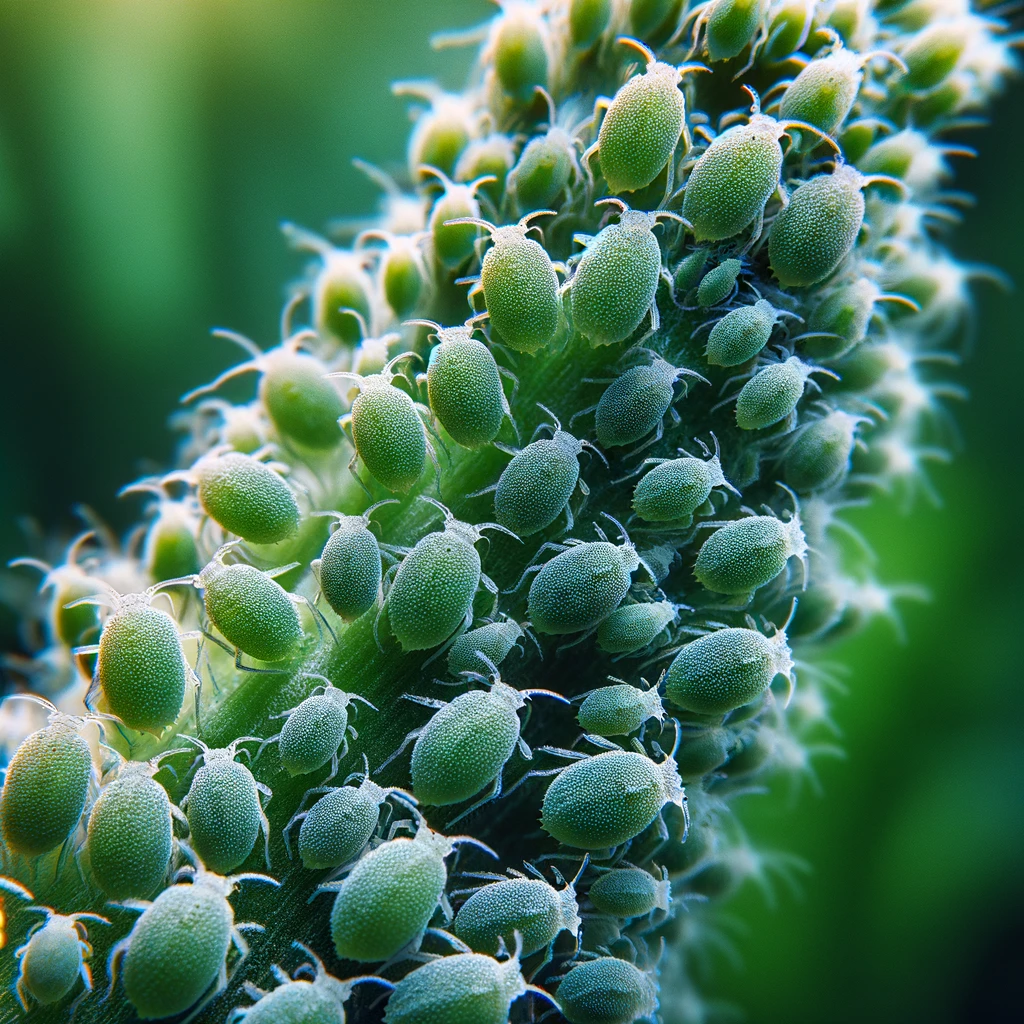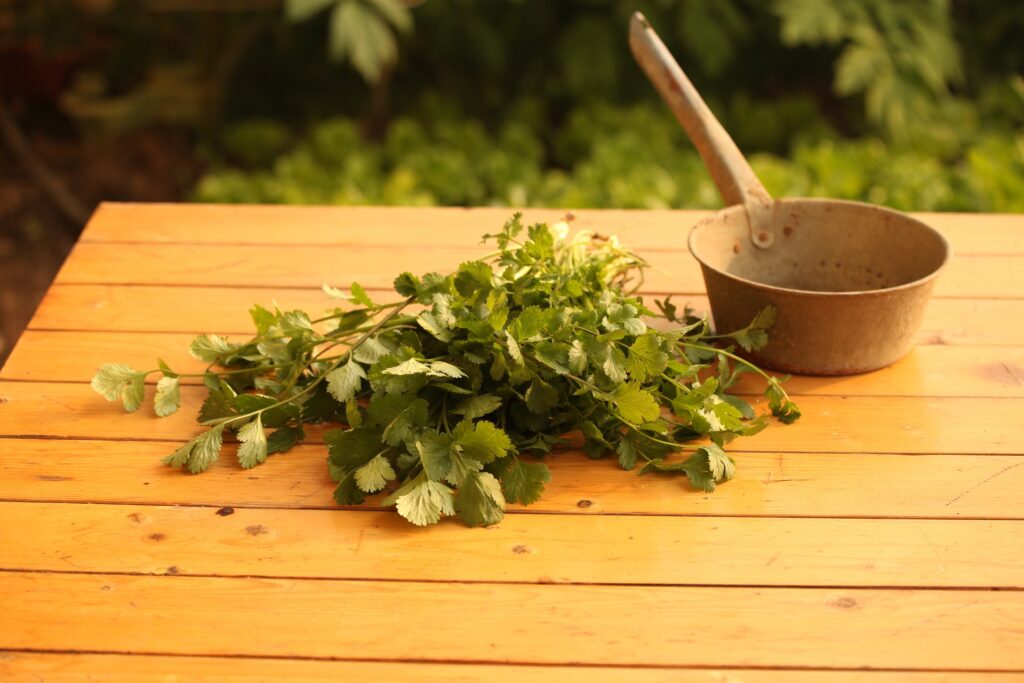How to Grow Cilantro from Cuttings
I. Introduction: How to Grow Cilantro from Cuttings

As a gardening enthusiast, I’ve always found joy in growing my own herbs, and cilantro is no exception. This article shares my personal experience and tips on how to grow cilantro from cuttings successfully.
As an avid gardener, I find immense joy in the simple yet profound process of growing cilantro from cuttings. It’s a practice that beautifully blends patience with excitement. Starting with choosing healthy cilantro stems, I prepare them by cutting and gently removing lower leaves. Planted in nutrient-rich, well-drained soil, these cuttings slowly transform, rooting themselves into their new home. The journey from a humble cutting to a lush, green cilantro plant is nothing short of rewarding. There’s a unique satisfaction in using freshly harvested cilantro from my garden, knowing it’s grown from my nurturing and care. This experience connects me deeper with the rhythms of nature and the delights of gardening.
II. Why Cilantro?

Cilantro, with its fresh and zesty flavor, is a staple in many kitchens. Growing it yourself ensures a constant, fresh supply for your culinary experiments.
Growing cilantro in your garden offers a range of benefits, both for your health and culinary endeavors. Here are some key advantages and culinary uses of cilantro:
a. Benefits of Growing Cilantro:
Freshness and Flavor: Homegrown cilantro has a noticeably fresher and more robust flavor compared to store-bought varieties. This enhances the taste of any dish it’s added to.
Health Benefits: Cilantro is rich in vitamins A, C, and K, and contains antioxidants, which are beneficial for health. It’s also known for its detoxifying properties.
Economic and Convenient: Growing cilantro at home can be more economical than buying it regularly from stores. Plus, having cilantro readily available in your garden adds convenience to your cooking routine.
Therapeutic Gardening: The process of growing and caring for cilantro can be therapeutic, offering a sense of calm and satisfaction.
Learning Opportunity: Gardening cilantro is an excellent way for beginners to learn about plant care and propagation, due to its relatively easy growing process.
b. Culinary Uses of Cilantro:

Herbal Flavoring: Cilantro is a popular herb in various cuisines worldwide, especially in Mexican, Asian, and Middle Eastern dishes.
Garnishing: Its fresh leaves are perfect for garnishing soups, salads, curries, and salsas, adding a burst of flavor and color.
Sauces and Dips: Cilantro is a key ingredient in many sauces and dips, such as chutneys, pesto, and guacamole.
Marinades: Its leaves and stems can be used in marinades to impart a fresh, citrusy flavor to meats and vegetables.
Infused Oils: Cilantro-infused oil is an excellent way to add a unique flavor to cooking oils for dressings and sautés.
Incorporating homegrown cilantro into your cooking not only enhances the taste of your dishes but also brings the satisfaction of using fresh, organically grown herbs from your own garden.
III. Understanding Cilantro’s Growth Requirements
Cilantro thrives in well-drained soil and partial to full sunlight. Knowing these conditions is crucial for healthy growth.
Cilantro thrives in specific conditions, and understanding these is key to successful growth. Ideal growing conditions for cilantro include:
1. Light
Cilantro prefers a sunny or partially shaded spot. Around 4-6 hours of sunlight per day is optimal, especially in cooler climates. In hotter regions, some afternoon shade is beneficial to prevent bolting (when the plant matures and produces seeds rapidly).
2. Soil
This herb does best in well-drained, fertile soil. A pH between 6.5 and 7.5 is ideal. Incorporating organic matter or compost into the soil can enhance its fertility and improve cilantro’s growth.
3. Temperature
Cilantro grows best in cooler temperatures, typically between 50°F and 85°F (10°C and 29°C). It’s a cool-season crop and can tolerate light frosts but struggles in hot, humid conditions.
4. Watering
Regular watering is essential for cilantro, keeping the soil moist but not waterlogged. Consistent moisture helps in the development of lush, healthy foliage.
Understanding and providing these conditions will help ensure your cilantro cuttings develop into robust, flavorful plants, ready for your culinary use.

IV. Getting Started with Cuttings
Choose healthy, vibrant cilantro stems for cuttings. Prepare them by trimming and removing lower leaves.
Selecting the right cilantro cuttings is crucial for successful propagation. Look for healthy, vigorous stems, ideally from a mature plant. These stems should be green, free from disease or stress, and have several leaf nodes (the points where leaves grow). Avoid stems that are woody or too tender.
Preparing the cuttings involves a few simple steps:
Cutting: Use a sharp, clean pair of scissors or a knife to cut a 3-4 inch stem. Make the cut just below a leaf node.
Preparing the Stem: Remove the leaves from the lower half of the cutting. This ensures that the focus of the plant’s energy goes towards root development rather than maintaining the leaves.
Rooting Hormone (Optional): Dipping the cut end in a rooting hormone can increase the chances of successful rooting, though it’s not mandatory for cilantro.
Once prepared, your cilantro cuttings are ready to be planted in soil or placed in water for root development. This initial care is a vital step in establishing a healthy cilantro plant.
V. The Planting Process
a. Step-by-Step Planting Guide for Cilantro Cuttings:
Prepare the Soil: Choose a pot with drainage holes and fill it with a mix of potting soil and compost. Ensure the soil is loose and well-draining.
Plant the Cuttings: Make a small hole in the soil with your finger. Place the cutting in the hole, ensuring the leaf-free part is buried. Gently firm the soil around the stem.
Water Gently: Water the soil thoroughly after planting, making sure it’s moist but not waterlogged.
Location: Place the pot in a spot that receives ample sunlight but is protected from the harsh midday sun.
b. Tips for Ensuring Successful Growth:
Consistent Watering: Keep the soil consistently moist, especially in the early stages of growth. Avoid letting the soil dry out completely.
Avoid Overcrowding: Give each cutting enough space to grow. Overcrowding can lead to poor air circulation and increase the risk of disease.
Monitor Temperature: Cilantro prefers cooler temperatures. Protect the plants from extreme heat or cold.
Fertilization: Use a balanced, organic fertilizer every 4-6 weeks to provide necessary nutrients.
Regular Check-ups: Regularly check for signs of pests or disease and address them promptly to ensure healthy growth.
By following these steps and tips, your cilantro cuttings should grow into healthy, productive plants, ready to add flavor to your dishes.
VI. Caring for Your Cilantro Plants
a. Watering and Feeding Cilantro:
Cilantro requires consistent watering to thrive. The soil should be kept moist but not waterlogged, as cilantro does not tolerate soggy conditions. Water the plant when the top inch of soil feels dry to the touch. It’s best to water in the morning, allowing excess moisture to evaporate during the day. As for feeding, cilantro benefits from a light application of a balanced, organic fertilizer every 4-6 weeks. This helps in providing the necessary nutrients for its growth, especially if the soil is not rich in organic matter.
b. Managing Sunlight and Temperature:
Cilantro grows best in cool to moderate temperatures, ideally between 50°F and 85°F (10°C to 29°C). It requires about 4-6 hours of sunlight daily. In regions with intense sun, providing partial shade during the hottest part of the day can prevent the plant from bolting prematurely. Conversely, in cooler climates, maximizing sun exposure is essential. Adjusting the plant’s location based on the season can help manage temperature and sunlight exposure effectively, ensuring healthy growth.
VII. Common Challenges and Solutions
a. Dealing with Pests and Diseases:

Cilantro can attract pests like aphids and whiteflies. To combat these, use a gentle spray of water to dislodge them or apply organic neem oil as a natural pesticide. Regularly inspect the plant for signs of pest infestations and act promptly. Diseases like leaf spot can be mitigated by ensuring good air circulation around the plants and avoiding overhead watering.
b. Addressing Common Growing Issues:
Bolting, where cilantro rapidly goes to seed, is a common issue, especially in hot weather. To prevent this, keep the plant cool and harvest leaves regularly. If the plant becomes leggy, provide more sunlight. Ensure proper soil drainage to prevent root rot, another common problem. Regularly check the soil moisture and adjust watering accordingly to maintain the right balance. With these measures, most growing issues can be effectively managed, ensuring a healthy cilantro crop.

VIII. Harvesting Your Cilantro
a. When and How to Harvest Cilantro:
Harvest cilantro once the plant is about 6 inches tall, which typically takes 3-4 weeks from planting. Cut the outer leaves first, leaving the inner leaves to continue growing. Use sharp scissors to avoid damaging the plant, and never harvest more than one-third of the plant at a time. This encourages new growth and prolongs the harvest period.
b. Storing and Using Your Cilantro:
For short-term use, store cilantro in a glass of water in the refrigerator, covering it loosely with a plastic bag. For longer storage, chop the leaves, place them in an ice cube tray with water, and freeze. Use fresh cilantro to add a burst of flavor to dishes like salsas, curries, and salads. Its unique taste is best enjoyed fresh but can also be incorporated into cooked dishes at the end of cooking to retain its flavor and aroma.
IX. Continuing the Cycle: Propagating More Cilantro
a. How to Take New Cuttings:
To propagate cilantro, choose a healthy parent plant. Look for stems that are vigorous and free from any signs of disease. Cut a 3-4 inch section from the tip of the stem, ensuring there are at least two leaf nodes present. Remove the leaves from the lower half of the cutting to direct the plant’s energy to root development. These cuttings can then be placed in water or directly into soil to root and grow into new plants.
b. Encouraging Sustainable Growth:
Sustainable growth of cilantro involves regular harvesting, which stimulates new growth, and continuous propagation from cuttings. Rotate the placement of your cilantro pots if growing indoors to ensure even exposure to sunlight. Replenish the soil with organic compost to maintain soil health and fertility. Avoid using chemical pesticides and fertilizers, opting instead for organic alternatives. By following these practices, you can enjoy a continuous supply of cilantro while maintaining an environmentally friendly and sustainable gardening approach.
X. Conclusion
Growing cilantro from cuttings is a rewarding experience that combines the joys of gardening with the benefits of having fresh herbs at your fingertips. This simple process not only offers the satisfaction of watching a small cutting transform into a lush, aromatic plant, but also ensures a fresh, organic supply of cilantro for your culinary creations. The practice is economical, therapeutic, and environmentally friendly. It nurtures a deeper connection with nature and provides a sense of accomplishment in growing your own food, making it a delightful endeavor for gardeners of all levels.
FAQs
1. Can I grow cilantro indoors from cuttings?
Absolutely! You can grow cilantro indoors. Just place the cuttings in a pot with well-drained soil and position it where it gets sufficient sunlight, like a sunny windowsill.
2. How often should I change the water for cilantro cuttings in water?
Change the water every 2-3 days to keep it fresh and encourage healthy root growth.
3. Will cilantro grown from cuttings taste as good as seeds?
Yes, cilantro grown from cuttings tastes just as vibrant and flavorful as those grown from seeds.
4. Can I use regular garden soil for my cilantro cuttings?
It’s best to use a well-draining potting mix for cilantro cuttings to ensure proper growth and prevent waterlogging.
5. How long does it take for cilantro cuttings to root?
Cilantro cuttings typically take 7-10 days to root, but this can vary based on environmental conditions.


